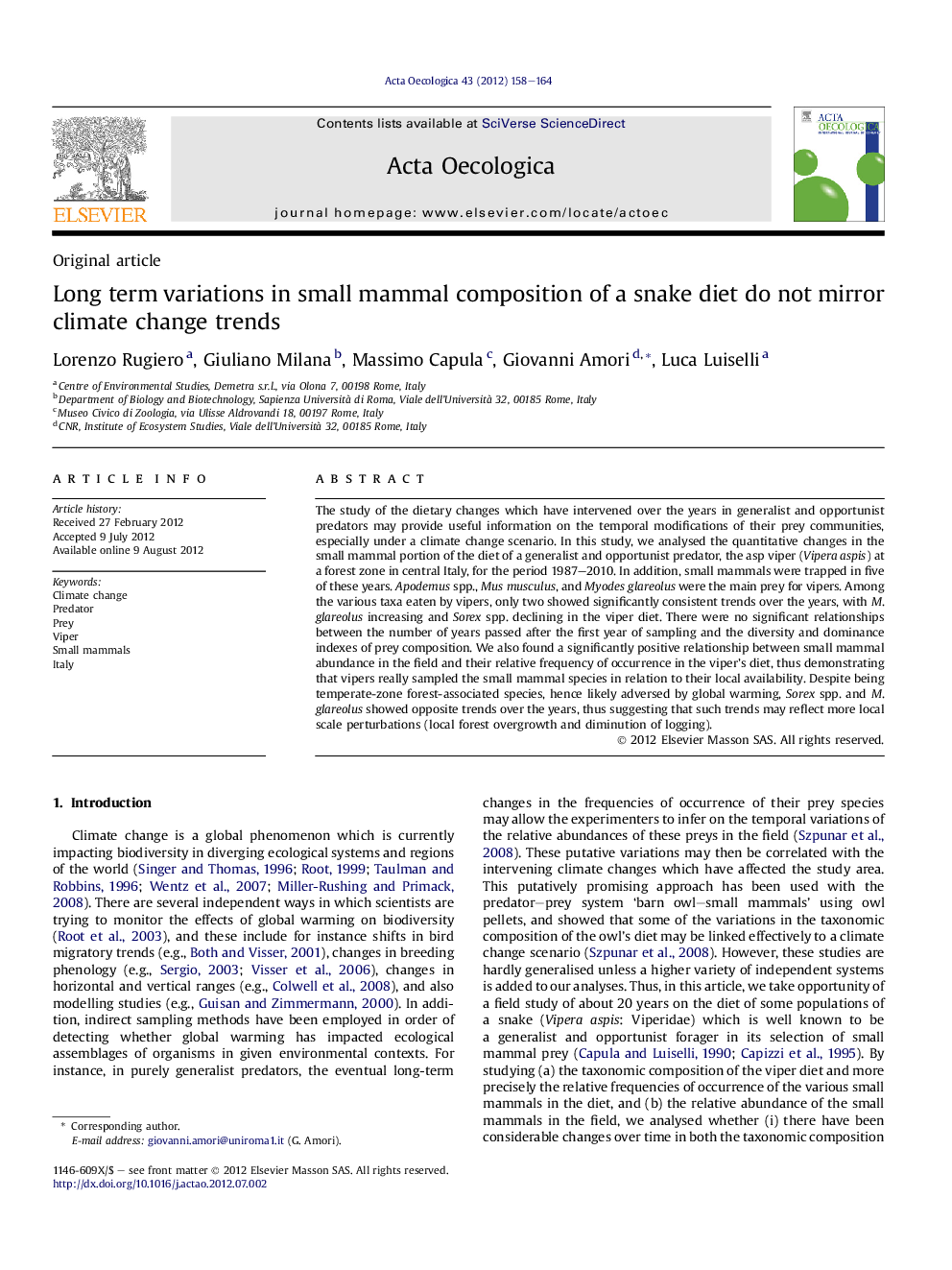| کد مقاله | کد نشریه | سال انتشار | مقاله انگلیسی | نسخه تمام متن |
|---|---|---|---|---|
| 4380873 | 1617728 | 2012 | 7 صفحه PDF | دانلود رایگان |

The study of the dietary changes which have intervened over the years in generalist and opportunist predators may provide useful information on the temporal modifications of their prey communities, especially under a climate change scenario. In this study, we analysed the quantitative changes in the small mammal portion of the diet of a generalist and opportunist predator, the asp viper (Vipera aspis) at a forest zone in central Italy, for the period 1987–2010. In addition, small mammals were trapped in five of these years. Apodemus spp., Mus musculus, and Myodes glareolus were the main prey for vipers. Among the various taxa eaten by vipers, only two showed significantly consistent trends over the years, with M. glareolus increasing and Sorex spp. declining in the viper diet. There were no significant relationships between the number of years passed after the first year of sampling and the diversity and dominance indexes of prey composition. We also found a significantly positive relationship between small mammal abundance in the field and their relative frequency of occurrence in the viper's diet, thus demonstrating that vipers really sampled the small mammal species in relation to their local availability. Despite being temperate-zone forest-associated species, hence likely adversed by global warming, Sorex spp. and M. glareolus showed opposite trends over the years, thus suggesting that such trends may reflect more local scale perturbations (local forest overgrowth and diminution of logging).
► A 20+ years of study of a snake diet revealed opportunistic foraging strategies.
► Two temperate forest-associated small mammal species were regularly eaten.
► These mammal species were presumably adversed by global warming.
► Opposite inter-annual trends occurred in frequency of these mammals in viper diet.
► The observed data reflect local scale perturbations instead of climate change.
Journal: Acta Oecologica - Volume 43, August 2012, Pages 158–164